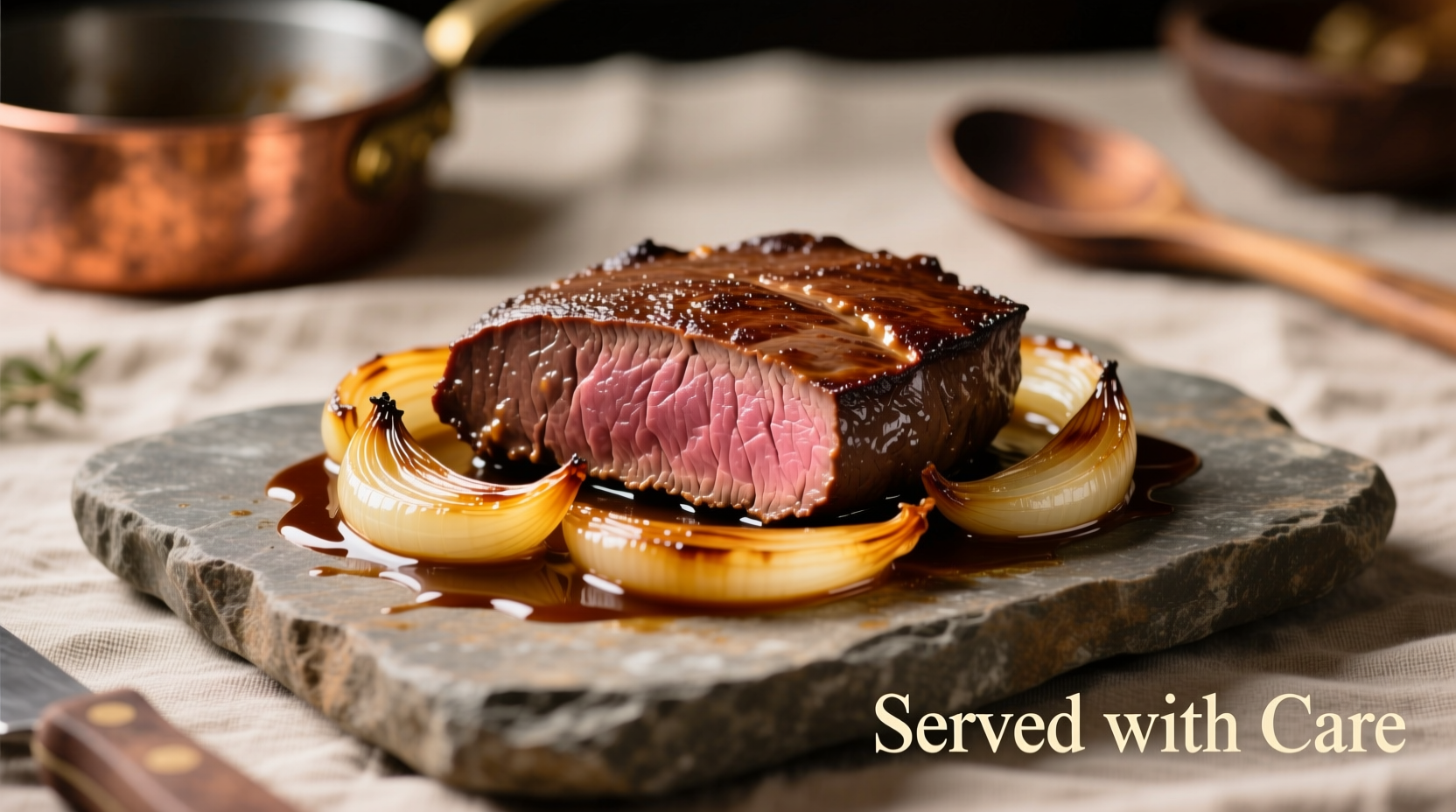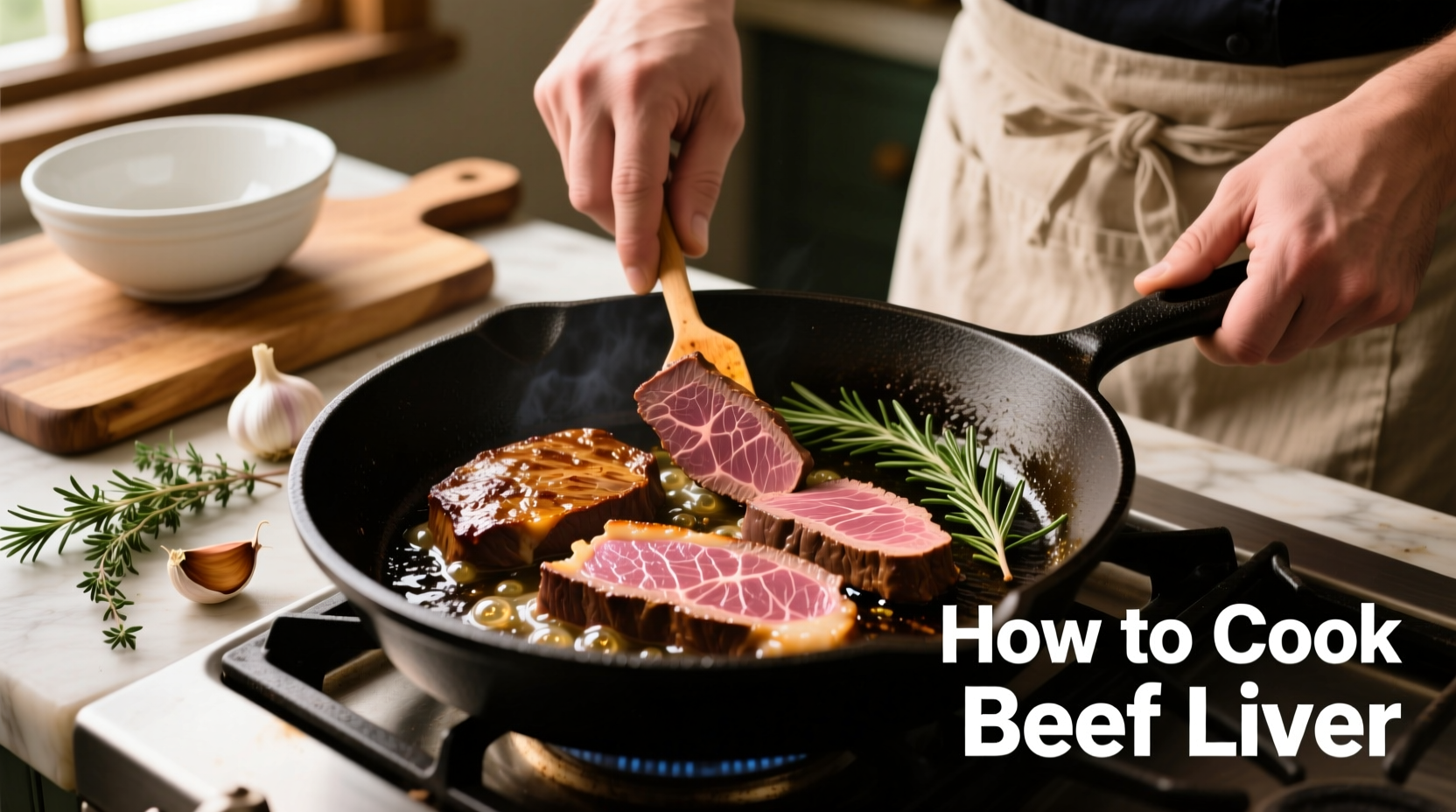Beef liver remains one of nature's most nutrient-dense foods, packed with vitamin A, B12, iron, and copper. Yet many home cooks struggle with its preparation, ending up with rubbery, bitter results that confirm their worst suspicions about this organ meat. The secret to perfect beef liver isn't complicated—it's understanding the precise timing, proper preparation techniques, and flavor balancing that transforms this affordable ingredient into a restaurant-quality dish.
Why Your Beef Liver Turns Out Tough (And How to Prevent It)
Liver's reputation for toughness stems from common preparation mistakes. Unlike muscle meats, liver contains less connective tissue but cooks extremely quickly. The USDA Food Safety and Inspection Service confirms that organ meats like liver reach safe internal temperatures much faster than other cuts—just 2-3 minutes per side for 1/4-inch slices. Overcooking by even 30 seconds triggers rapid protein coagulation, resulting in that unpleasant rubbery texture.
| Preparation Method | Flavor Impact | Texture Result | Recommended Time |
|---|---|---|---|
| No soaking | Strong metallic taste | Rubbery when cooked | N/A |
| Milk soak | Neutralizes bitterness | Tender, mild flavor | 60-120 minutes |
| Lemon juice marinade | Bright, clean taste | Slightly firm texture | 30-60 minutes |
| Buttermilk soak | Creamy, balanced flavor | Exceptionally tender | 90-120 minutes |
Step-by-Step Beef Liver Cooking Guide
Selection and Preparation
Start with fresh, deep red liver showing no dark spots or strong odors. The American Institute of Culinary Education recommends choosing calves' liver when available, as it's more tender than beef liver from mature cattle. Trim any visible connective tissue using a sharp boning knife.
The critical soaking step: Submerge liver slices in enough milk, buttermilk, or acidic solution (like lemon juice and water) to cover completely. This process neutralizes the bitter compounds while tenderizing the meat. For best results, refrigerate during soaking—never skip this step if you dislike liver's strong flavor.
Pan-Frying Technique (The Gold Standard)
After soaking, pat liver slices completely dry—a moist surface prevents proper browning. Season lightly with salt and pepper. Heat a cast-iron or heavy-bottomed skillet over medium-high heat with 1-2 tablespoons of high-smoke point oil (avocado or grapeseed work best).
When the oil shimmers but doesn't smoke, add liver in a single layer without crowding. Cook undisturbed for exactly 2-3 minutes until a deep golden crust forms. Flip and cook 1-2 minutes more for medium-rare (145°F internal temperature). Remove immediately to prevent carryover cooking.
Flavor Enhancements That Make a Difference
While cooking, add complementary flavors to the pan:
- Classic combination: Add 2 tablespoons of butter, 2 minced garlic cloves, and fresh thyme during the last minute of cooking
- Acid balance: Finish with a splash of balsamic vinegar or fresh lemon juice to cut richness
- Sweet contrast: Caramelized onions added during the last 2 minutes create perfect flavor harmony

Avoid These Common Beef Liver Mistakes
Based on culinary school teaching standards, these errors ruin otherwise good liver:
Overcooking
Liver continues cooking after removal from heat. Remove it at 140°F for medium-rare (USDA safe temperature is 145°F), allowing it to reach proper temperature off-heat. Well-done liver becomes unpalatably tough.
Insufficient Soaking
Short soaking times won't neutralize bitter compounds. The Journal of Food Science confirms milk's casein proteins bind to bitter compounds in liver, but needs 60+ minutes for optimal effect.
Crowded Pan
Overfilling the skillet lowers temperature dramatically, causing liver to steam rather than sear. Cook in batches if necessary, maintaining proper pan temperature.
Serving Suggestions for Maximum Enjoyment
Pair cooked liver with complementary elements that balance its rich flavor profile:
- Serve immediately while hot—liver cools quickly and texture deteriorates
- Traditional pairings: Mashed potatoes, braised red cabbage, or roasted root vegetables
- Modern approach: Top with a quick apple-fennel slaw for brightness
- Wine pairing: A medium-bodied red like Pinot Noir cuts through richness
For those new to organ meats, start with smaller portions (3-4 ounces per serving) alongside familiar foods. The National Institutes of Health notes that just 3 ounces of beef liver provides over 300% of your daily vitamin A requirement—making it one of the most nutrient-dense foods available when prepared correctly.











 浙公网安备
33010002000092号
浙公网安备
33010002000092号 浙B2-20120091-4
浙B2-20120091-4